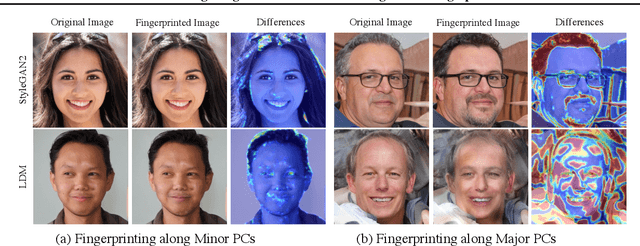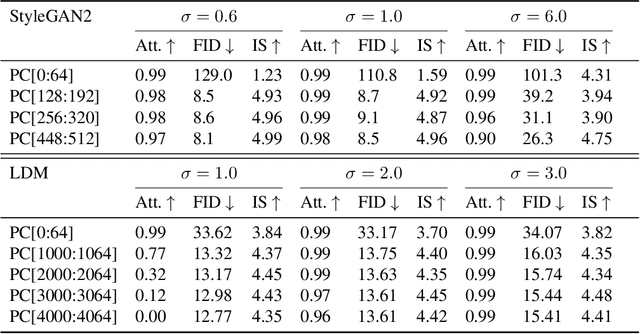Attributing Image Generative Models using Latent Fingerprints
Paper and Code
Apr 17, 2023



Generative models have enabled the creation of contents that are indistinguishable from those taken from the nature. Open-source development of such models raised concerns about the risks in their misuse for malicious purposes. One potential risk mitigation strategy is to attribute generative models via fingerprinting. Current fingerprinting methods exhibit significant tradeoff between robust attribution accuracy and generation quality, and also lack designing principles to improve this tradeoff. This paper investigates the use of latent semantic dimensions as fingerprints, from where we can analyze the effects of design variables, including the choice of fingerprinting dimensions, strength, and capacity, on the accuracy-quality tradeoff. Compared with previous SOTA, our method requires minimum computation and is more applicable to large-scale models. We use StyleGAN2 and the latent diffusion model to demonstrate the efficacy of our method.
 Add to Chrome
Add to Chrome Add to Firefox
Add to Firefox Add to Edge
Add to Edge